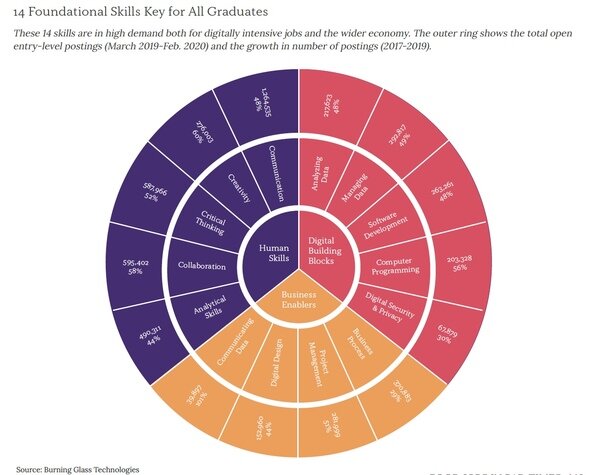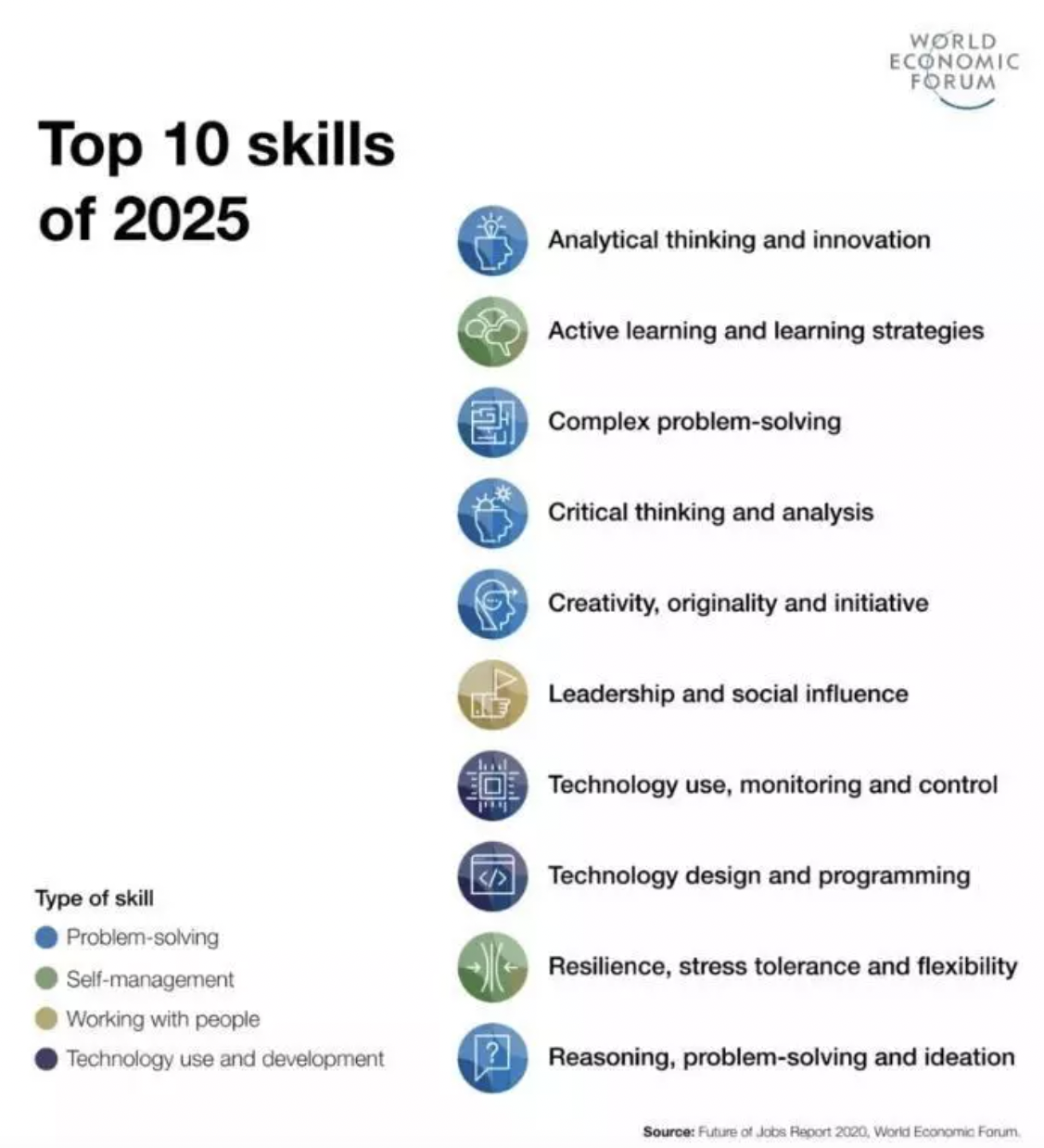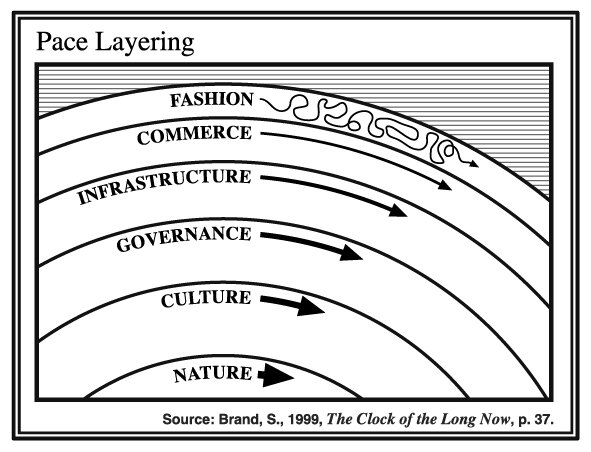Pace Layering the Skills of the Future, Part 2
In 1921, approximately 17% of American students graduated from high school. [1] Almost a century later, the graduation rate is now 88%.
The skills that were valuable 100 years ago are not as valuable today. Some skills that are valuable today won’t be as valuable 5, 10, 20 years from now.
Some skills endure. Others expire. [2]
So when Burning Glass [3], or the World Economic Forum, or any other source tells us the most in-demand skills for the economy, we should take into account that they’re focusing on the pace layers closest to the surface—and therefore the layers that change the most quickly.
How might these reports look differently if they mapped skills into different layers to signal their enduring or expiring nature?
It’s helpful to know what’s changing about what skills the world is calling for.
And it might be even more important to know what’s not changing.
***
[1] Kenneth A. Simon and W. Vance Grant, Digest of Educational Statistics, Office of Education, Bulletin 1965, No. 4 (Washington, D.C., U.S. Government Printing Office, 1965).
[2] And if they expire, they probably have some kind of half-life. It might be worth figuring out whether different pace layers correlate with different half-lives.
[3] See “Rethinking the First Job.”
***
Thank you for reading this post from Basecamp's blog, Ed:Future. Do you know someone who would find the Ed:Future blog worthwhile reading? Please let them know that they can subscribe here.




